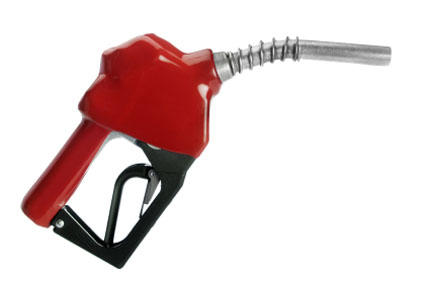This content is provided courtesy of USAA.
While you can't do much about the global price of oil, you can take steps to reduce pain at the pump.
With current gas prices on the rise, you may be tempted to trade in your car for a scooter — or resort to pedaling your way to work.
Before you make any drastic financial or lifestyle sacrifices, consider these tips provided by the Environmental Protection Agency, fueleconomy.gov and gasbuddy.com.
1. Slow down.
Although each vehicle reaches its optimal fuel economy at different speeds, gas mileage usually drops dramatically at speeds above 60 mph. As a general rule, every 5 mph you drive above 60 mph is like paying an extra 30 cents per gallon of gas.
2. Be gentle.
Avoid jack-rabbit starts and sudden stops, which can lower your gas mileage by 33% on the highway and by 5% around town.
3. Lighten your load.
Try not to keep unnecessary items in your car, especially heavy ones. Each 100 pounds of extra weight can reduce fuel efficiency by up to 2%.
4. Scout out cheap gas.
Avoid gas stations in affluent areas and near major freeway exits. In major metropolitan areas, outlying suburbs tend to have the lowest gas prices, according to gasbuddy.com. If you're not in a hurry when traveling, drive a few blocks from the freeway exit to find lower gas prices. Also, avoid service stations with on-site auto repair shops, which often charge more for gas. Download the gasbuddy.com app on your mobile device to locate gas stations near you and see their current gas prices. If you don't see a download for your device, just go to m.gasbuddy.com, which can be used from any mobile device.
5. Skip traditional gas stations.
Check out wholesale clubs, grocery stores or department stores with gas stations onsite. These businesses often sell gas at discounted prices and may offer credit for in-store purchases when you fill up with gas.
6. Keep your older car in shape.
While traditional tune ups are becoming a thing of the past for newer vehicles, older cars with worn spark plugs, low transmission fluid and dragging brakes can suck your gas tank dry. Check your owners manual for recommended maintenance schedules and get regular engine checkups. Fixing a car that is noticeably out of tune can improve its gas mileage by an average of 4%. Fixing a serious maintenance problem, such as a faulty oxygen sensor, can improve your mileage by as much as 40%.
7. Avoid idling.
For every hour a car idles, between a quarter-gallon to a half-gallon of fuel is consumed. Restarting your vehicle only takes a few seconds' worth of fuel. However, restarting your car excessively can cause starter wear.
8. Don't neglect your tires.
Keep your tires properly inflated and make sure you have them aligned periodically. You can improve your gas mileage by around 3.3% by keeping your tires inflated to the proper pressure. Plus, properly inflated tires are safer and last longer.
9. Choose the right oil.
All oils aren't created equal. That's especially true when it comes to engine oil. Using only the manufacturer's recommended grade of motor oil cited in your owners manual can improve your fuel efficiency by 1% to 2%.










